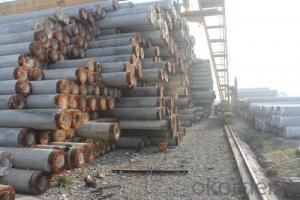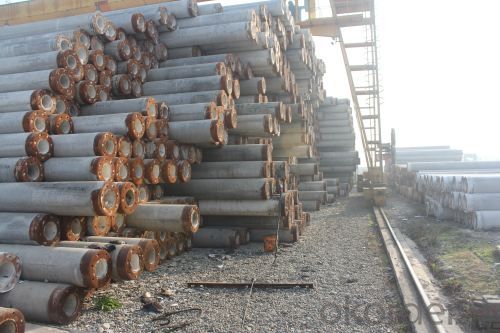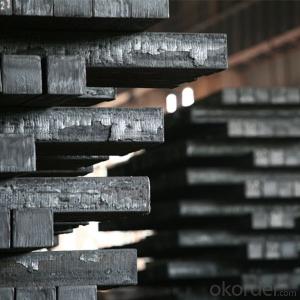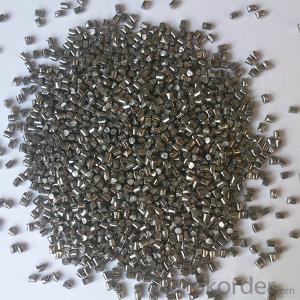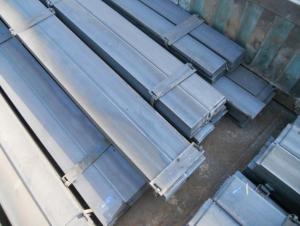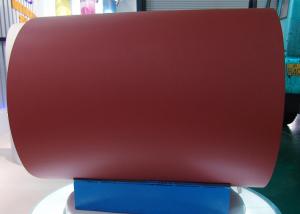PHC Pile
- Loading Port:
- China Main Port
- Payment Terms:
- TT OR LC
- Min Order Qty:
- -
- Supply Capability:
- -
OKorder Service Pledge
Quality Product, Order Online Tracking, Timely Delivery
OKorder Financial Service
Credit Rating, Credit Services, Credit Purchasing
You Might Also Like
We mainly engaged in manufacturing PHC concrete piles with diameters of Φ600~Φ1400 for wharf. Every year, the company produces various types of concrete piles of over 150,000 meters with single-section pile of 41meter long and annual gross output value up to RMB 600 million.
With years’ manufacturing experience of concrete piles and a great number of excellent technological and management talents, the company persists in technical innovation and research of new products. The large-diameter PHC concrete piles with merits such as good bending strength, large bearing capacity, fine resistance against the external force and so forth have been the preferential choice of structural materials for foundation engineering construction such as large ports, wharfs, shipyard, huge bridges, high-rise buildings, heavy factories, high-speed railway, etc.
The company holds the operation philosophy of “honest, practical and harmonious for win-win” and persists in the quality guideline of “constant improvement with prohibition of non-conforming products into construction site” to provide you sincerely with superior products and service.
Detailed introduction to PHC PILE:
PTC C70
Φ400 X 70mm ≤12m
Φ500 X 80mm ≤13m
Φ550 X 80mm ≤13m
Φ600 X 80mm ≤13m
PC or PHC(C70 A or C80 AB)
Φ400 X 90mm ≤14m
Φ500 X 100mm ≤15m
Φ500 X 120mm ≤15m
Φ500 X 125mm ≤15m
Φ550 X 100mm ≤15m
Φ550 X 120mm ≤15m
Φ600 X 110mm ≤15m
Φ600 X 130mm ≤15m
- Q: How do you cut a steel sheet?
- In order to cut a steel sheet, it is necessary to utilize the correct tools and techniques. The following are several commonly employed methods: 1. Power tools: An angle grinder equipped with a cutting disc is the most frequently used power tool for cutting steel sheets. While operating the grinder, it is essential to wear safety goggles and gloves. Begin by marking the cutting line on the sheet using a marker or chalk. Then, slowly and steadily maneuver the grinder along the marked line to cut through the steel. 2. Shears: For thin steel sheets, manual or electric shears can be employed. These tools possess a scissor-like cutting mechanism specifically designed for cutting metal. Position the steel sheet between the shears' blades, aligning the cutting line with them, and apply consistent pressure to cut through the sheet. 3. Plasma cutting: This technique is most suitable for thicker steel sheets. Plasma cutting involves the utilization of a high-velocity jet of ionized gas (plasma) to melt and sever the metal. Specialized equipment, such as a plasma cutter utilizing an electric arc to generate the plasma jet, is necessary for this method. 4. Waterjet cutting: Another effective method for cutting steel sheets is waterjet cutting. This method employs a high-pressure jet of water mixed with an abrasive substance, such as garnet, to cut through the metal. Although this technique is ideal for intricate shapes and precise cuts, it requires specialized machinery. Prioritizing safety is of utmost importance before attempting to cut a steel sheet. It is crucial to wear suitable protective gear, like safety glasses, gloves, and, if necessary, a face shield. Additionally, ensure that the work area is well-ventilated to prevent inhaling any fumes or particles produced during the cutting process.
- Q: How is steel wire rod used in the manufacturing of wire forms for automotive exhaust systems?
- The manufacturing of wire forms for automotive exhaust systems heavily relies on steel wire rod. These wire forms are essential for providing structural support and stability to the exhaust system, ensuring its optimal functioning and long lifespan. To begin with, steel wire rod is employed to construct the primary framework of the wire form, which serves as the backbone of the exhaust system. This framework is responsible for securely holding and positioning various components of the exhaust system, including the muffler, catalytic converter, and pipes. The remarkable tensile strength and durability of steel wire rod make it an ideal choice for this purpose, as it can withstand the intense vibrations, heat, and pressure that the exhaust system encounters. Furthermore, steel wire rod is utilized to shape the hangers and brackets that fasten the exhaust system to the vehicle's chassis. These hangers and brackets are crucial for maintaining the correct alignment and stability of the exhaust system, preventing any unnecessary movement or rattling. The flexibility and malleability of steel wire rod enable it to be easily formed into the desired hanger or bracket design, ensuring a precise fit and dependable performance. Moreover, steel wire rod is also employed in the fabrication of wire mesh screens and filters that are installed within the exhaust system. These screens and filters play a vital role in trapping and eliminating contaminants, such as particulate matter and harmful gases, from the exhaust gases before they are released into the environment. The exceptional strength and corrosion resistance of steel wire rod make it an excellent choice for constructing these screens and filters, as they must endure harsh operating conditions and exposure to corrosive elements. In conclusion, steel wire rod plays a critical role in the manufacturing of wire forms for automotive exhaust systems. Its impressive tensile strength, durability, flexibility, and corrosion resistance make it the ideal material for constructing the main framework, hangers, brackets, and screens/filters within the exhaust system. By utilizing steel wire rod, manufacturers can ensure that the wire forms provide the necessary structural support, stability, and reliability required for the proper functioning of automotive exhaust systems.
- Q: How do steel strips perform in high-speed applications?
- Steel strips perform well in high-speed applications due to their high strength, durability, and ability to withstand extreme temperatures and pressures. Their excellent mechanical properties and resistance to fatigue make them suitable for use in various industries, such as automotive, aerospace, and manufacturing, where high-speed operations are common.
- Q: What are the applications of steel in the wastewater treatment industry?
- Steel is widely used in the wastewater treatment industry for various applications. It is commonly used in the construction of wastewater treatment plants, including the fabrication of tanks, pipes, and other infrastructure. Steel's durability and strength make it suitable for handling the corrosive nature of wastewater and the high-pressure conditions in treatment processes. Additionally, steel is often used in the manufacturing of equipment such as pumps, screens, and valves due to its resistance to corrosion and ability to withstand harsh operating conditions. Overall, steel plays a crucial role in ensuring the efficiency and longevity of wastewater treatment facilities.
- Q: How do steel rebars prevent cracking in concrete?
- Steel rebars prevent cracking in concrete by providing additional tensile strength to the composite material. As concrete is strong in compression but weak in tension, the steel rebars act as reinforcement and resist the tensile forces that can cause cracking. By distributing the applied loads more evenly throughout the structure, rebars help to enhance the structural integrity and durability of the concrete, preventing the formation and propagation of cracks.
- Q: What are the different types of stainless steel wire fasteners?
- A variety of stainless steel wire fasteners can be found on the market, offering different options for various needs. Some commonly used types include: 1. Stainless steel screws: These fasteners have threads and are used to join objects together. They come in different lengths, diameters, and head styles to accommodate different applications. 2. Stainless steel bolts: Similar to screws, bolts are threaded fasteners, but they usually have a larger diameter and require a nut to secure the joint. They are commonly used in heavy-duty situations. 3. Stainless steel nuts: Nuts are used together with bolts to secure joints. They come in various shapes and sizes, such as hexagonal, square, and winged nuts. 4. Stainless steel washers: Washers are thin, flat metal discs used to evenly distribute load and protect the material's surface. They come in different sizes and shapes, including flat washers, lock washers, and fender washers. 5. Stainless steel rivets: Rivets are permanent fasteners inserted into materials, deforming the end to join them together. They are commonly used in industries like automotive, aerospace, and construction. 6. Stainless steel clips and clamps: Clips and clamps are used for securing or holding objects in place. They come in various designs, such as spring clips, hose clamps, and pipe clamps. 7. Stainless steel nails: Nails are pointed fasteners used in woodworking and construction to secure materials together. 8. Stainless steel pins: Pins are cylindrical fasteners used to hold components or align parts together. They come in different shapes, like dowel pins, cotter pins, and hitch pins. 9. Stainless steel hooks: Hooks are curved fasteners used for hanging or suspending objects. They are commonly used in applications such as hanging plants, tools, or decorative items. It should be noted that these examples are just a small selection of the stainless steel wire fasteners available. The specific choice of fastener will depend on factors like the application, load requirements, and environmental conditions.
- Q: How do you prevent scaling or oxidation on steel flat bars during heat treatment?
- To prevent scaling or oxidation on steel flat bars during heat treatment, a common approach is to use a protective atmosphere or medium such as nitrogen or controlled atmosphere furnaces. Additionally, applying a coating or using stainless steel or heat-resistant alloys can help prevent scaling or oxidation. Employing proper handling techniques, such as avoiding exposure to moisture or corrosive substances, can also contribute to minimizing scaling or oxidation during heat treatment.
- Q: How are steel pipes protected against external moisture?
- Steel pipes are protected against external moisture through a variety of methods. One common method is the application of a protective coating or paint on the surface of the pipes. This coating acts as a barrier, preventing moisture from coming into direct contact with the steel. The coating can be made of different materials, such as epoxy, polyethylene, or zinc, depending on the specific requirements and environment. Another method of protection is through the use of corrosion inhibitors. These inhibitors are added to the internal or external surfaces of the pipes, forming a protective layer that prevents moisture from causing corrosion. Corrosion inhibitors can be in the form of chemicals, such as rust converters or rust preventatives, which react with the steel to form a protective barrier. Additionally, steel pipes can be protected against external moisture through cathodic protection. This technique involves the use of sacrificial anodes or impressed current to create an electric current that protects the steel. Sacrificial anodes, typically made of zinc, aluminum, or magnesium, are attached to the steel pipes and corrode over time instead of the steel, thus preventing moisture-induced corrosion. Furthermore, proper insulation and waterproofing measures are crucial in protecting steel pipes from external moisture. Insulation materials, such as foam or tape, are applied to the pipes to provide an additional layer of protection and prevent moisture infiltration. Waterproofing measures, such as the use of sealants or membranes, can also be implemented to ensure that no moisture seeps into the pipes. Regular maintenance, including inspections and repairs, is essential to ensure the continued protection of steel pipes against external moisture. By promptly addressing any areas of damage or corrosion, the integrity of the protective measures can be maintained, prolonging the lifespan of the steel pipes and preventing costly repairs or replacements in the future.
- Q: How does the silicon steel grain orientation impact its magnetic properties?
- The grain orientation of silicon steel plays a significant role in determining its magnetic properties. Silicon steel is an alloy primarily composed of iron and silicon, with small amounts of other elements such as carbon and manganese. The presence of silicon in the alloy helps to enhance its magnetic properties. The grain orientation refers to the arrangement of the crystal structure within the material. In silicon steel, the grains can be oriented in different directions, such as random orientation or preferred orientation. This orientation is influenced by various factors, including the manufacturing process, heat treatment, and mechanical stresses. The magnetic properties of silicon steel, particularly its ability to magnetize and demagnetize, are affected by the grain orientation. When the grains are randomly oriented, the magnetic domains within the material are also randomly aligned. This results in a reduced magnetic permeability, meaning that the material is less responsive to an applied magnetic field. On the other hand, when the grains are preferentially oriented, the magnetic domains align in a specific direction. This alignment leads to increased magnetic permeability, making the material more responsive to magnetic fields. Preferred grain orientation can be achieved through processes such as annealing or rolling, which induce alignment of the crystal structure. The impact of grain orientation on magnetic properties is particularly important in applications where high magnetic efficiency is desired, such as in transformers, electric motors, and generators. By controlling the grain orientation, manufacturers can optimize the magnetic performance of silicon steel for specific applications. In summary, the grain orientation of silicon steel has a direct impact on its magnetic properties. Preferred grain orientation enhances the material's magnetic permeability and responsiveness to magnetic fields, while random orientation reduces these properties. By understanding and controlling the grain orientation, manufacturers can tailor the magnetic properties of silicon steel to meet the requirements of various applications.
- Q: Are stainless steel balls used in power plant turbines?
- Yes, stainless steel balls are commonly used in power plant turbines. Stainless steel is a preferred material for turbine components due to its excellent corrosion resistance, high strength, and ability to withstand high temperatures. In power plant turbines, stainless steel balls are typically used in various applications such as valve systems, governor systems, and other critical components that require low friction and high durability. These balls help to ensure smooth operation and minimize wear and tear, thereby enhancing the efficiency and lifespan of the turbines.
Send your message to us
PHC Pile
- Loading Port:
- China Main Port
- Payment Terms:
- TT OR LC
- Min Order Qty:
- -
- Supply Capability:
- -
OKorder Service Pledge
Quality Product, Order Online Tracking, Timely Delivery
OKorder Financial Service
Credit Rating, Credit Services, Credit Purchasing
Similar products
Hot products
Hot Searches
Related keywords
